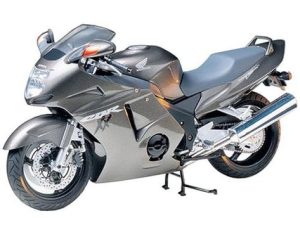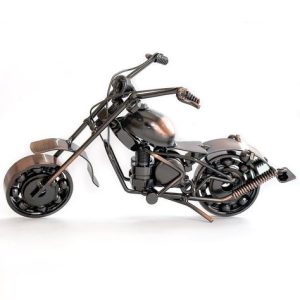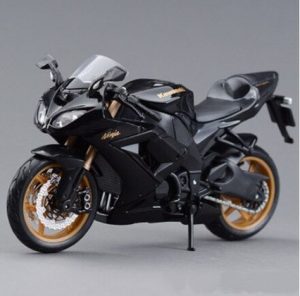May 16, 2024
Essential Steps Before Buying Your First Motorcycle
Buying a motorcycle can be an exciting prospect! It opens the door to freedom, adventure, and a unique way to experience the world. However, before you jump into buying a motorcycle, it’s important to be prepared. This comprehensive guide explores the steps involved in buying a motorcycle, safety considerations, and the fun of planning your future rides.
Licensing and Safety First
Motorcycles are exhilarating machines, but they also require responsibility and safety precautions. Here’s where to begin:
Get your motorcycle license.
Licensing requirements vary by region. Check your local Department of Motor Vehicles (DMV) website for details on your area’s licensing process and any required safety courses.
Enroll in a motorcycle safety course.
These courses teach essential skills for safe riding and can potentially reduce licensing costs. Instructors provide hands-on training in maneuvering, braking, and safe riding practices.
Invest in safety gear.
A helmet, eye protection, jacket, pants, gloves, and boots are essential for every ride. Choose gear that fits comfortably and offers proper protection.

Exploring Your Motorcycle Options
Once you’re licensed and geared up, it’s time to explore the exciting world of motorcycles! Here are some popular styles to consider:
-
Standard motorcycles: These versatile bikes offer a comfortable riding position and balanced handling. They’re a great choice for beginners because they’re easy to learn on and maneuver.
-
Scooters: Small, automatic motorcycles with under-seat storage, scooters are a practical choice for commuting and around-town riding. They are easy to operate and offer excellent fuel efficiency.
-
Cruisers: Known for their relaxed riding posture, low seat height, and powerful engines, cruisers offer a comfortable ride and a sense of style.
-
Dual-sport motorcycles: These versatile machines can handle both on-road and off-road riding. They’re a good choice for riders who want to explore dirt trails and gravel roads.
Researching Specific Models
As you delve into specific motorcycle models, consider these factors:
-
Riding style: Imagine how you’ll be using your motorcycle. Daily commuting? Weekend cruising? Exploring off-road trails? Different motorcycles cater to different riding styles.
-
Engine size: A smaller engine is easier to handle for beginners. Start with a motorcycle with an engine size that aligns with your experience level.
-
Weight: A lighter motorcycle is easier to maneuver and control, especially at slower speeds.
-
Seat height: Choose a motorcycle with a seat height that allows you to comfortably place both feet flat on the ground. This is important for balance and control when stopped.

The Research Process: Reviews and Resources
The internet offers a wealth of information on motorcycles. Here are some resources to utilize:
-
Motorcycle review websites and magazines offer detailed information on various motorcycles, including performance specs, handling characteristics, and ownership experiences.
-
Online forums allow you to connect with other motorcycle riders and get their insights on different models. Read reviews from riders with similar experience levels and riding styles.
-
Motorcycle dealerships have salespeople who can answer your questions. They may also offer brochures and other resources on specific models.
The Importance of Test Rides
Once you’ve narrowed down your choices, schedule some test rides (with your motorcycle license in hand). Test riding is crucial. It’s the best way to get a feel for a motorcycle’s size, weight, handling, and overall comfort.
-
Be upfront with the dealership about your experience level and what you’re looking for in a motorcycle.
-
Take your time during the test ride. Pay attention to how the motorcycle handles at different speeds and in different situations.
-
Don’t feel pressured to buy a motorcycle you’re not comfortable with. There’s the perfect motorcycle out there waiting for you!

Planning Your Rides (The Fun Part!)
With your motorcycle license, safety gear, and newfound knowledge about motorcycles, you’re ready to start planning your rides! Here are some ideas:
-
Day trips to scenic locations can be a great way to experience the thrill of motorcycle riding and explore new places.
-
Join riding groups for camaraderie and to discover new riding routes. There are groups for all experience levels and riding styles.
-
Motorcycle camping trips can be an unforgettable adventure. Research motorcycle-friendly campgrounds and chart your course.
Remember, prioritize safety on every ride. Always wear your safety gear and obey traffic laws.
The Takeaway
Buying a motorcycle is a journey, and this guide is just the beginning!
By following these steps, you’ll be well-equipped to make informed decisions and enjoy the process of finding the perfect motorcycle for you.
Remember, motorcycle riding involves inherent risks. Here are some additional safety tips to consider:
-
Always wear a DOT-approved helmet that fits snugly and comfortably.
-
Dress for safety every time you ride, including long pants, a jacket, gloves, and sturdy boots.
-
Be aware of your surroundings and ride defensively.
-
Never ride under the influence of alcohol or drugs.
-
Schedule regular motorcycle maintenance to keep your bike in safe riding condition.

The Future of Riding!
Owning a motorcycle opens up a world of possibilities for exploration, adventure, and fun. Here are some ways to stay engaged in the motorcycle community:
-
Motorcycle events and rallies are a great way to meet other riders and experience new cultures.
-
Attend motorcycle shows to see the latest models and gear.
-
Subscribe to motorcycle magazines to stay informed about the latest industry news and trends.
Owning a motorcycle is a rewarding experience, but it’s important to prioritize safety and responsibility. With proper preparation and knowledge, you can ensure a lifetime of enjoyment on the open road.
Congratulations on taking the first steps towards motorcycle ownership! This journey is filled with learning, excitement, and the satisfaction of choosing the perfect motorcycle for you. Ride safe!

The Final Steps: Finding the Perfect Motorcycle
With your budget in mind, you’re ready to start searching for your motorcycle! Here are some additional tips:
-
Shop around and compare prices from different dealerships and private sellers.
-
Get a history report on any used motorcycle you’re considering buying.
-
Don’t rush into a decision. Take your time and find the motorcycle that’s right for you.
Congratulations! You’ve taken a big step towards becoming a motorcycle owner. By following these steps, you’ll be well on your way to finding the perfect motorcycle for you and enjoying the many benefits of motorcycle ownership.




